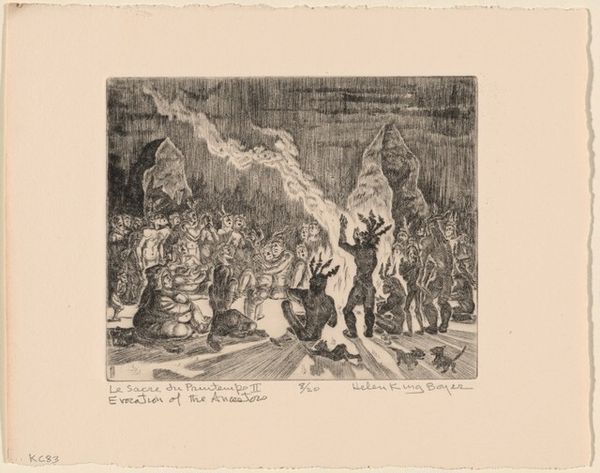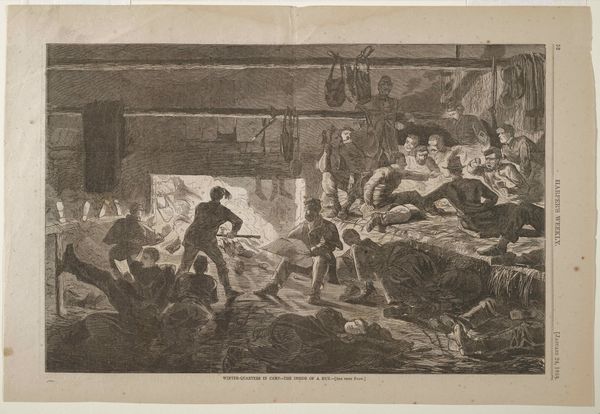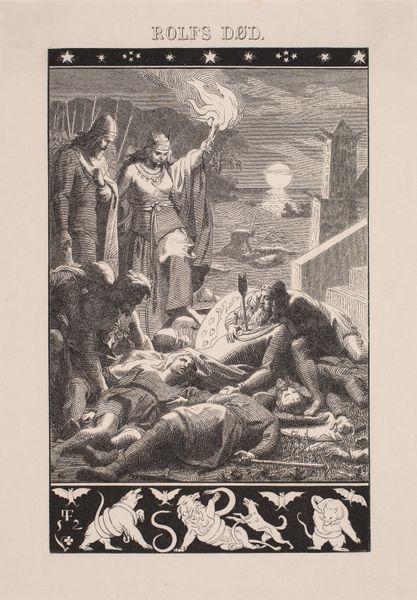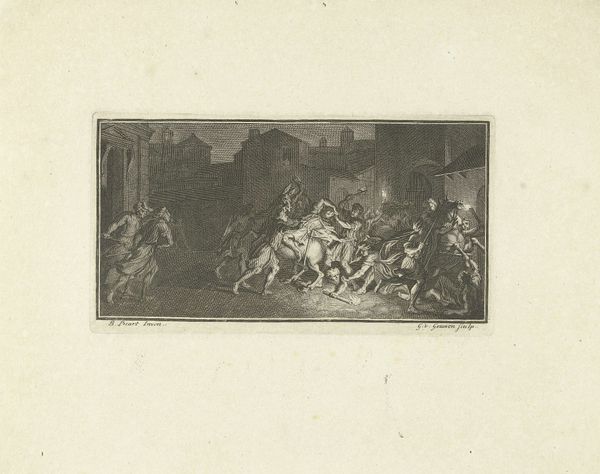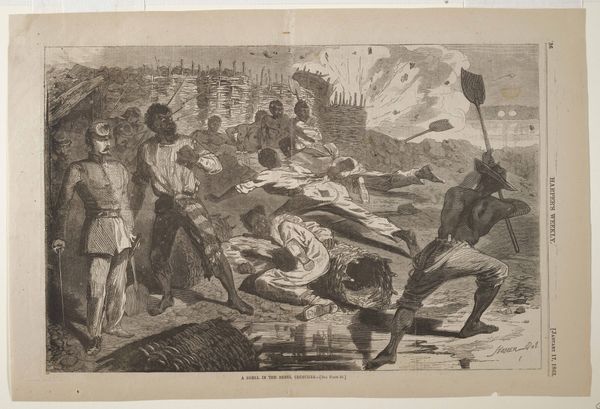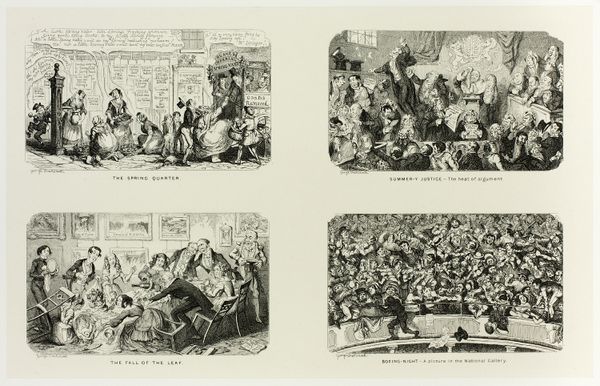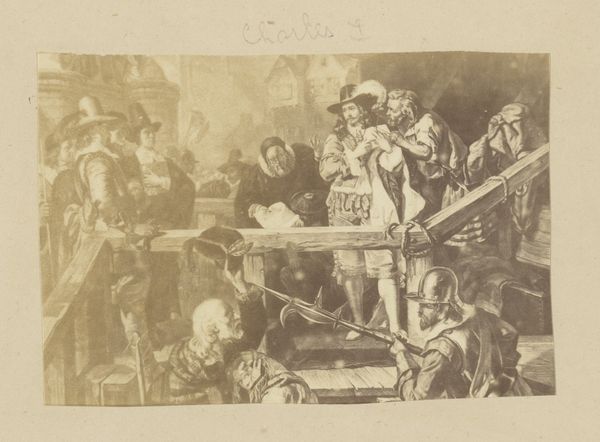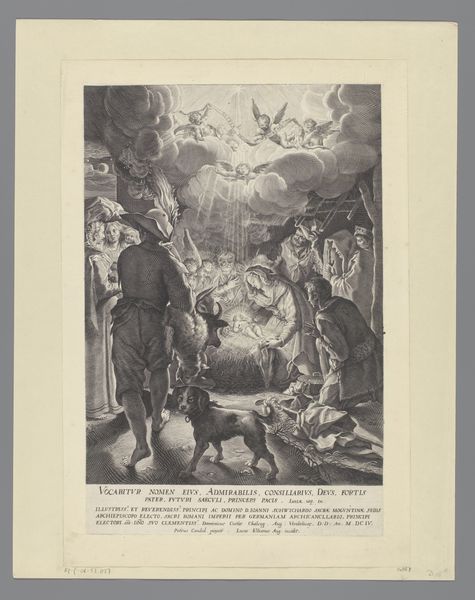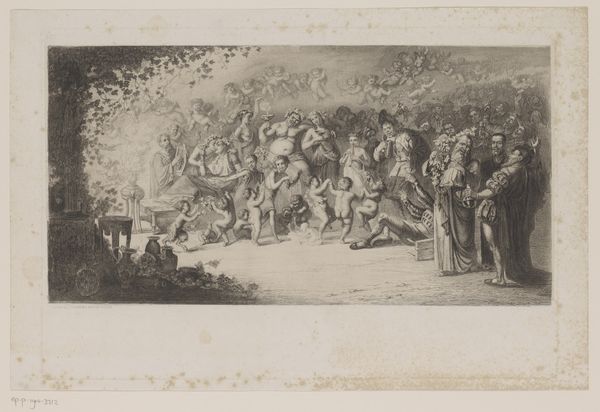
print, woodcut, engraving
#
ink drawing
#
medieval
#
narrative-art
# print
#
figuration
#
woodcut
#
line
#
genre-painting
#
history-painting
#
engraving
Dimensions: 143 mm (height) x 230 mm (width) (bladmaal)
Editor: So, this is H.C. Henneberg's "Rolf springer igennem ilden," or "Rolf Jumps Through the Fire," from 1852. It's an engraving, and it feels really chaotic – a violent scene frozen in a stark, linear style. How do you interpret this work in the context of its time? Curator: That sense of frozen chaos is key, isn't it? Consider the 1850s. There's a burgeoning sense of nationalism sweeping through Europe. Henneberg is using a medieval, historical subject to subtly ask: Who are we as a nation, and what sacrifices – implied by the 'fire' – are we willing to make for our identity? The medium, printmaking, makes it reproducible, thus, it reaches a wider audience, disseminating these nationalist sentiments. Editor: So, the fire is a metaphor? I initially thought it was simply part of the story. Curator: Precisely. Think about what 'fire' often represents: purification, destruction, trial. The act of jumping through it signifies a test of faith, perhaps. How does the depiction of gender and class within the scene strike you? Do you notice a specific point of view being centered in the image? Editor: I see mostly men, some actively fighting, others watching passively. There’s a hierarchy visible in the clothes and the actions – those actively fighting seem lower status than the spectators, the almost ‘ghostly’ observers at the left, but it is only slightly represented through differences in their robes or garments. I would guess it reflects class divides inherent in power structures. Curator: Exactly! By visualizing a medieval narrative through this lens, Henneberg subtly critiques the power dynamics of his own time. It highlights the complex intersectional relationship between history, gender, and national identity during a period of significant socio-political shifts. Editor: I hadn't considered it from that angle. The historical setting, paired with such a stark style, seemed merely aesthetic. But you’re saying the image does social and political work, asking key questions of identity at this pivotal moment in Danish history. Curator: Precisely. And hopefully this work enables us to also reflect on power and gender relations today. Editor: Absolutely! This gives me a new appreciation for the depth hidden within this seemingly straightforward historical scene.
Comments
No comments
Be the first to comment and join the conversation on the ultimate creative platform.
